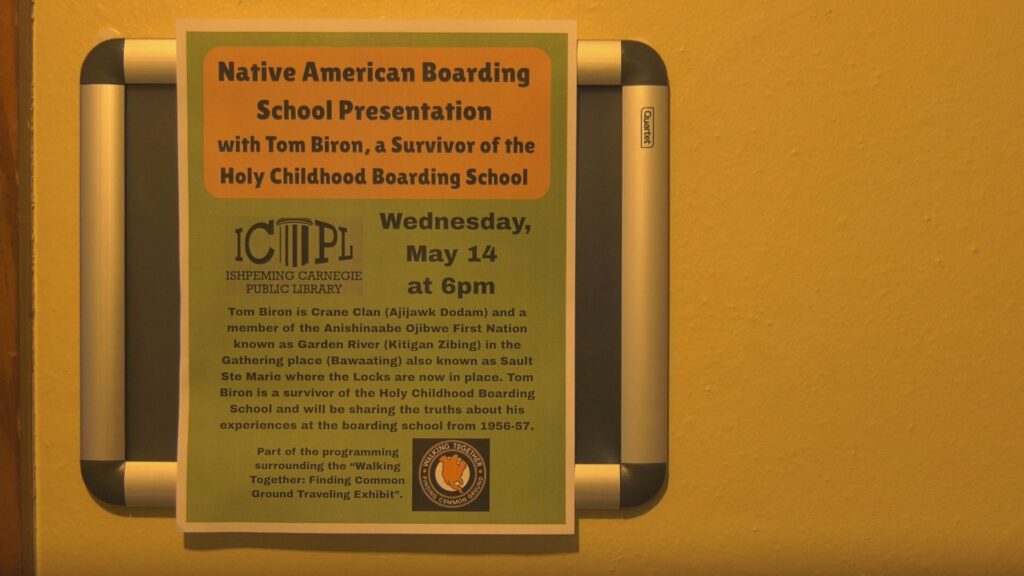ISHPEMING, Mich. (WZMQ) – Tom Biron is Crane Clan (Ajijawk Dodam) and a member of the Anishinaabe Ojibwe First Nation in Sault St. Marie.
He is a survivor of the Holy Childhood Boarding School of Harbor Springs, from 1956-1957, at just 5 years old.
“None of us really realized what it was,” said Biron.
Back in 1493, the Doctrine of Discovery declared that Christian nations had the divine right to claim lands inhabited by non-Christian peoples .
This ideology led to European colonization across the globe, including on Turtle Island, now called North America.
In 1819, Congress passed the Civilization Fund Act, directing money to missionary groups to ‘civilize’ Native children through religious education, still prominent throughout the late 1900s.
“We would come back as children,” continued Biron. “But we were told that we were going to be soldiers of Christ.”
Biron added that the United States have been around for almost 250 years, and in some ways are already more prosperous than most nations in that time. But across those years, common ground was nearly unobtainable.
“If people could sit down and realize ‘our families were here, why aren’t we prosperous?'” said Biron. “This is why this educational piece is so important. I think the real America is with all of us.”
Tom has been dedicated to sharing his story and others alike. Spreading this often untold side of history shows how its legacy, and the impacts of these boarding schools continue to be felt today.
The presentation was part of the Episcopal Diocese of Northern Michigan’s program called, “Walking Together: Finding Common Ground.”
